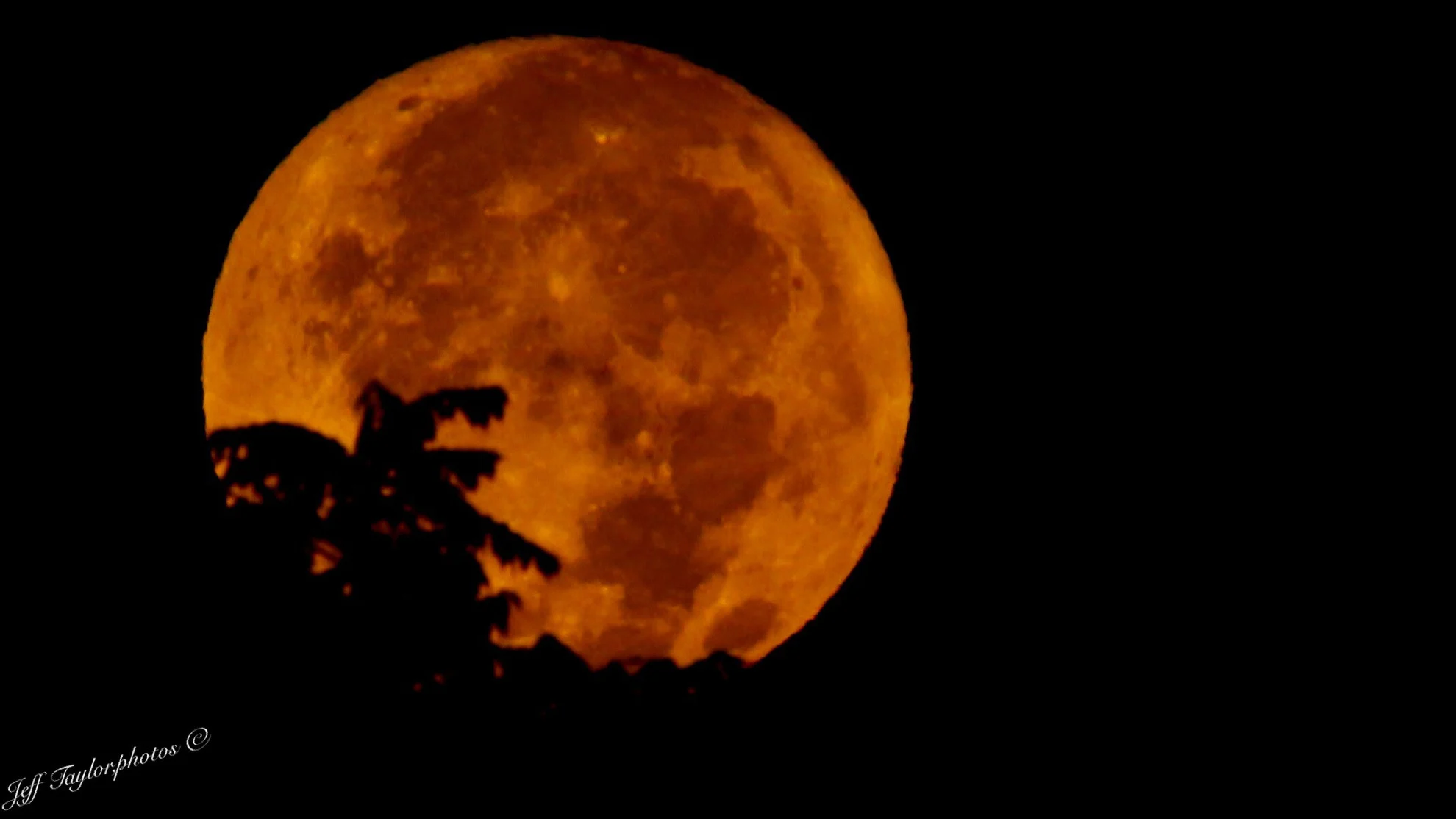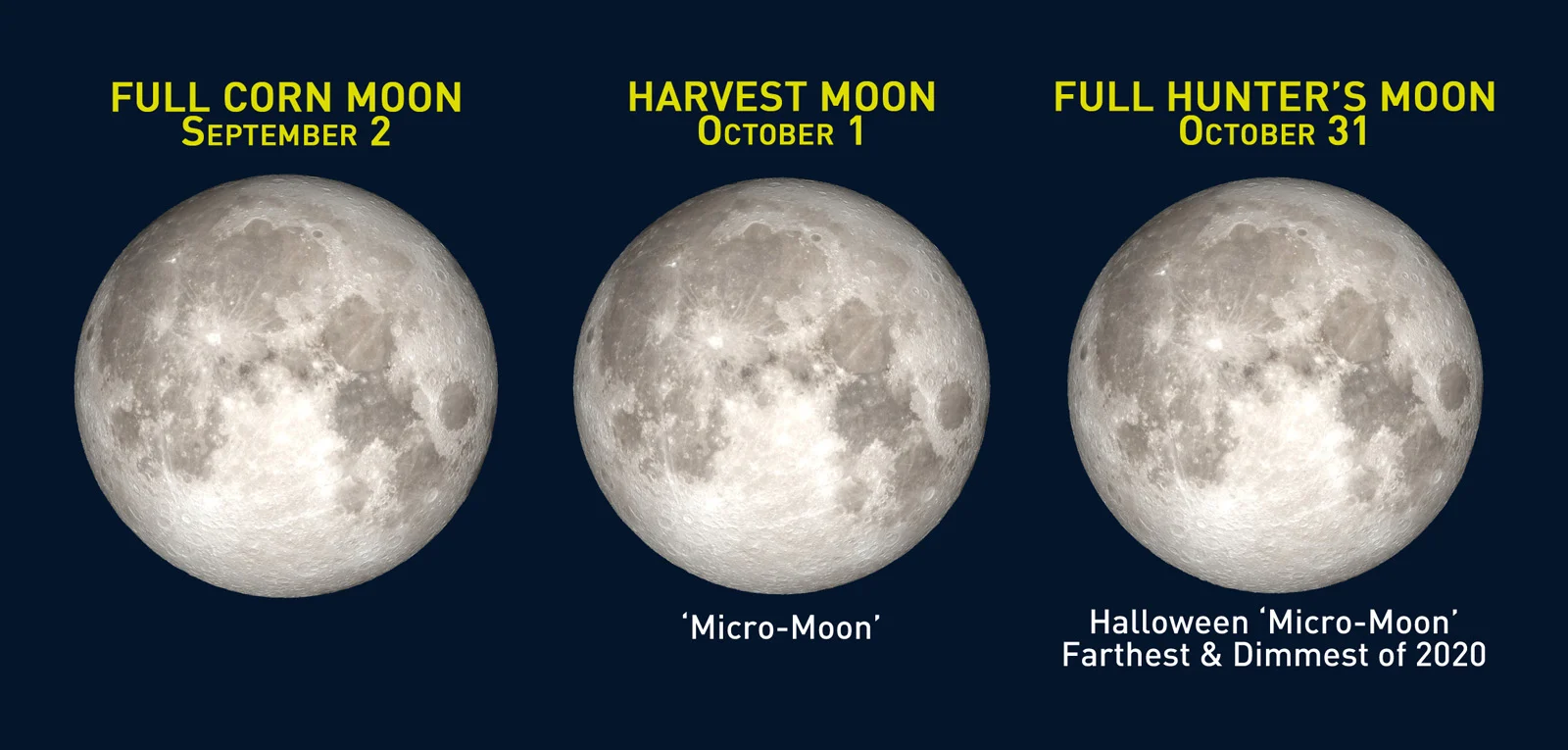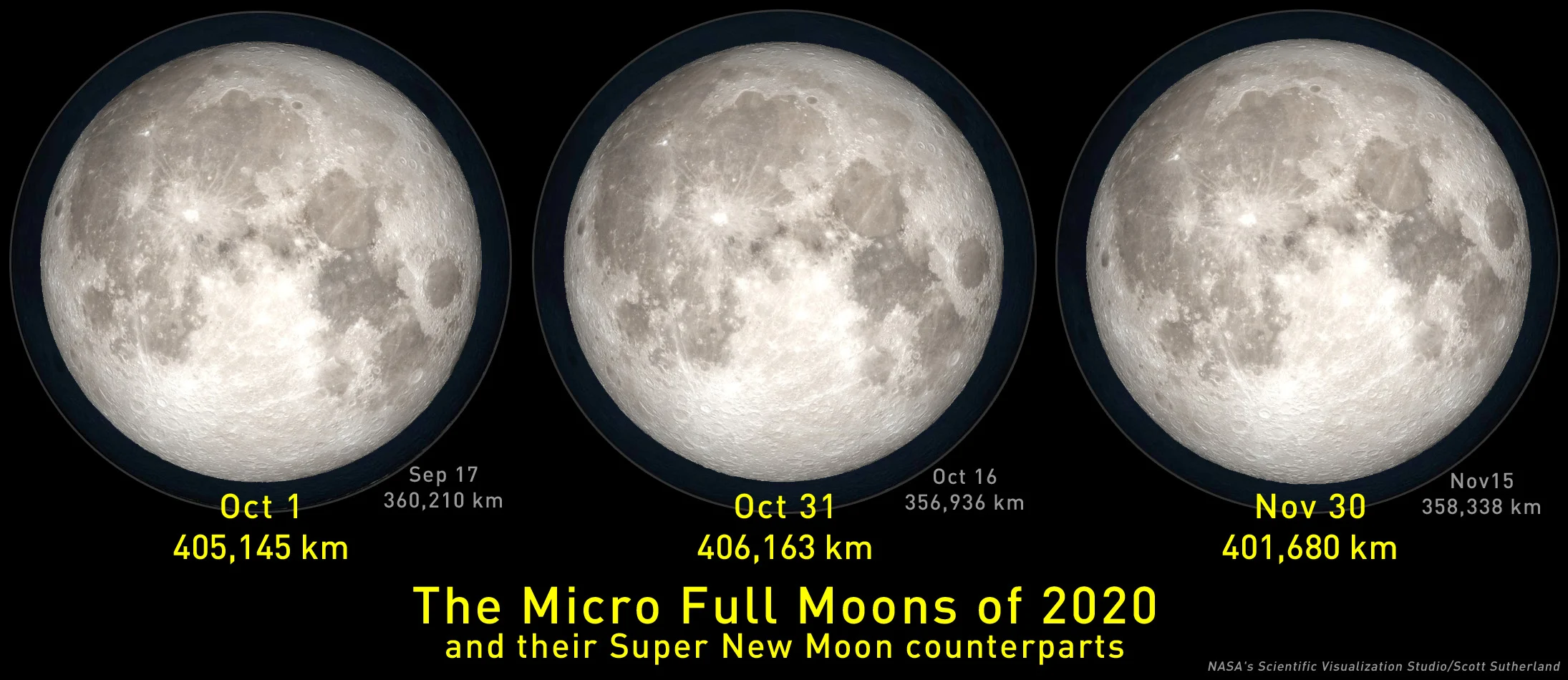
Here are five cool facts about tonight's 'micro' Harvest Moon
We haven't had a Harvest Moon like this in 46 years!
2020's Harvest Moon rises tonight, and this year, it's a special one.
Look up in the sky after sunset, for one of the smallest Full Moons of 2020. Based on the timing, and a quirk of how we perceive the world around us, some extraordinary things are going on with this particular Full Moon.
First, will we actually see it? Here are the forecast cloud conditions for Thursday night, across Canada.

The best places to see it from appear to be Central and Northern B.C., most of Alberta, the southwest corner of Saskatchewan, southern and eastern Ontario, southern Quebec, New Brunswick, PEI, and the southwestern part of mainland Nova Scotia. Since cloud conditions can change fairly quickly on the local scale, check your forecast just to be sure.
WHAT IS A HARVEST MOON?
A Harvest Moon is the Full Moon that occurs closest to the Autumnal Equinox.
Depending on the year, it can happen anywhere from two weeks before to two weeks after the equinox.
In 2020, Full Moons fall on September 2 (20 days before the equinox) and October 1 (just 9 days after). So, the October 1 Full Moon takes the title of Harvest Moon this year.
Visit our Complete Guide to Fall 2020 for an in depth look at the Fall Forecast, tips to plan for it and a sneak peek at the winter ahead
NO SHARING IN 2020
Usually, this particular Full Moon of the year is known by more than one name. Depending on whether it takes place in September or October, the Harvest Moon typically shares time with the Corn Moon or the Hunter's Moon.
2020 is different, though.

Credit: NASA's Scientific Visualization Studio/Scott Sutherland
Since we have 13 Full Moons this year, rather than just the usual 12, this is the first time since 1974 that the Harvest Moon gets a Full Moon all to itself.
MICROMOON
Tonight's Harvest Moon is a 'micromoon'. The opposite of a supermoon, a micromoon is a Full Moon that occurs when the Moon is within 90 per cent of its farthest distance from Earth for the month, or at least 405,000 km away.
This is the first of three micromoons this season. However, this isn't the farthest Full Moon of 2020. That occurs on October 31.

Credit: NASA's Scientific Visualization Studio/Scott Sutherland
Read more: Why is the supermoon so compelling to us?
EAGER MOON
On average, the Moon rises about 50 minutes later each day. However, this timing varies based on the Moon's distance from Earth and how far from the equator the observer is.
For example, for someone in Quito, Ecuador, the Moon rises around 40 minutes later when it is farthest from Earth, and 60 minutes later when it is closest. Someone in Winnipeg, MB, on those same nights, will see the Moon rising only 15 minutes later when it is farthest from Earth, and up to 85 minutes later when it is closest.
Tonight's micromoon Harvest Moon will be an "eager" one for those of us in Canada. It will rise only around 20 minutes or so later than it did on Wednesday (or even sooner for those farther north)!
RELATED: SEE EVERY VIEW OF THE MOON FOR 2020 IN LESS THAN 5 MINUTES
THE MOON ILLUSION
Since this Harvest Moon will be farther away than usual, it should appear slightly smaller to us here on Earth. Our brains may not register that fact to start, though, due to a little trick called The Moon Illusion.
We gauge the size and distance of something based on comparing that object to other things directly around it. The Moon technically doesn't have anything directly around it, at least not that we can perceive with the naked eye. So, the brain tries to put it into perspective by comparing it to objects in the foreground - trees, buildings, etc. Fitting the Moon into that perspective, the brain perceives it as much larger than it actually is.

This Full Moon rose over Calgary, AB, on September 13, 2019. Credit: Siv Heang
You can try a couple of tricks of your own to cancel out this effect. Stretch your arm out and cover the Moon over with your thumb. Then uncover it. That will give you a better perspective. Looking at the Moon through a cellphone camera can help, too, and you can take a few pictures while you're at it.
